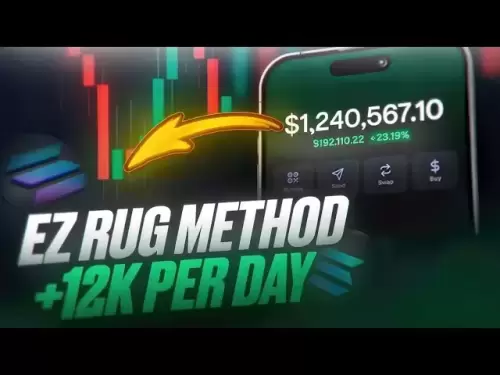-
 Bitcoin
Bitcoin $108,522.9936
0.51% -
 Ethereum
Ethereum $2,600.2119
2.25% -
 Tether USDt
Tether USDt $1.0001
0.00% -
 XRP
XRP $2.3065
1.88% -
 BNB
BNB $661.9093
0.34% -
 Solana
Solana $150.9961
1.40% -
 USDC
USDC $0.9999
0.00% -
 TRON
TRON $0.2877
0.21% -
 Dogecoin
Dogecoin $0.1708
1.78% -
 Cardano
Cardano $0.5863
1.70% -
 Hyperliquid
Hyperliquid $39.0718
4.52% -
 Bitcoin Cash
Bitcoin Cash $507.4600
2.09% -
 Sui
Sui $2.9070
2.06% -
 Chainlink
Chainlink $13.8666
4.64% -
 UNUS SED LEO
UNUS SED LEO $9.1277
0.82% -
 Stellar
Stellar $0.2624
5.86% -
 Avalanche
Avalanche $18.1961
2.40% -
 Shiba Inu
Shiba Inu $0.0...01182
1.77% -
 Toncoin
Toncoin $2.8141
2.42% -
 Hedera
Hedera $0.1611
3.70% -
 Litecoin
Litecoin $87.6537
1.88% -
 Monero
Monero $317.0356
0.02% -
 Polkadot
Polkadot $3.4327
2.63% -
 Dai
Dai $1.0000
-0.01% -
 Ethena USDe
Ethena USDe $1.0006
0.05% -
 Bitget Token
Bitget Token $4.3043
0.50% -
 Uniswap
Uniswap $7.6006
2.93% -
 Aave
Aave $293.0019
4.60% -
 Pepe
Pepe $0.0...01007
3.08% -
 Pi
Pi $0.4658
2.42%
How to add a new account on Ledger Live?
"Ledger Live lets you securely manage multiple crypto accounts, each with its own address, for better organization of your digital assets."
Jul 09, 2025 at 12:14 pm
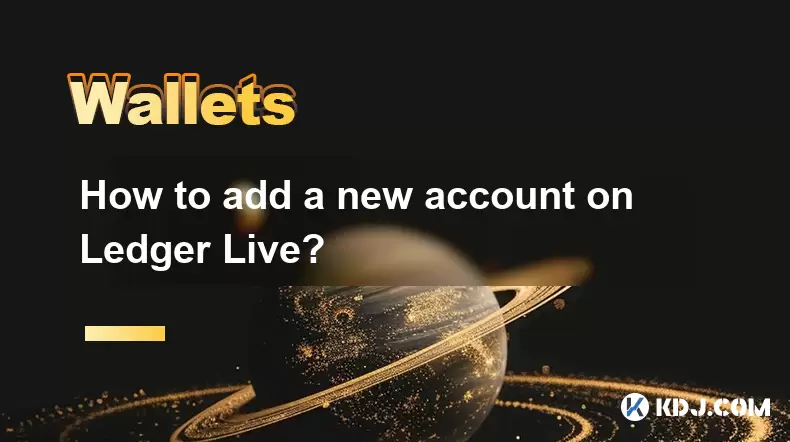
What is Ledger Live and Why Do You Need an Account?
Ledger Live is a software application designed to manage your cryptocurrency assets securely. It serves as the interface between your Ledger hardware wallet (like Nano S or Nano X) and the blockchain networks you interact with. Unlike traditional wallets, Ledger Live does not store your private keys—those remain safely on your hardware device. To organize and track multiple cryptocurrencies and accounts, users often need to add new accounts within Ledger Live. This process allows for better asset management across different blockchains and ensures that users can monitor all their holdings from one centralized dashboard.
Understanding the Difference Between Wallets and Accounts
Before proceeding with adding a new account, it’s essential to understand the distinction between wallets and accounts in Ledger Live. A wallet typically refers to the overall interface and connection to your hardware device, while an account represents a specific blockchain address associated with a particular cryptocurrency. For example, if you own Bitcoin and Ethereum, each will have its own dedicated account within Ledger Live. Users might want to create additional accounts for various reasons such as separating personal and business funds, managing multiple projects, or testing transactions on testnets without affecting their main funds.
How to Access the Account Management Section
To begin the process of adding a new account, launch the Ledger Live desktop or mobile application and ensure your Ledger device is connected and unlocked. Once logged in, navigate to the Accounts tab, which displays all existing accounts linked to your wallet. Here, you'll find a list of supported cryptocurrencies already configured under your wallet. To add another account, look for the “Add Account” button, usually located at the bottom of the screen or near the top-right corner depending on the version of the app. Clicking this will open the account creation wizard, guiding you through the necessary steps.
Selecting the Cryptocurrency and Derivation Path
After initiating the Add Account process, you’ll be prompted to choose the specific cryptocurrency for which you want to create a new account. Ledger Live supports a wide variety of coins and tokens, including BTC, ETH, LTC, XRP, and many ERC-20 tokens. Select the desired coin from the dropdown menu or search bar. Next, the system may ask you to choose a derivation path, especially if you're working with custom or testnet accounts. The default derivation path follows the BIP44 standard, which looks like 44'/coin_type'/0'/0/0. If you're unsure, stick with the default unless instructed otherwise by a specific service or development team.
Confirming the New Account Creation
Once you've selected the cryptocurrency and derivation path, the next step involves confirming the action on your Ledger hardware wallet. Your device will display a message asking whether you want to allow the addition of a new account. Use the buttons on your Ledger to approve the operation. This step ensures that no unauthorized changes are made to your wallet structure. After approval, the new account will appear in your Ledger Live interface, complete with its public address and transaction history. You can now send or receive funds to this newly added account directly from the app.
Troubleshooting Common Issues When Adding Accounts
Occasionally, users may encounter issues when trying to add a new account. One common problem is the “Account already exists” error, which occurs when the derivation path or coin type matches an existing entry. In such cases, try using a different index number in the derivation path, for example, changing 0'/0/0 to 0'/0/1. Another frequent issue arises when adding unsupported tokens, particularly lesser-known ERC-20 tokens. To resolve this, manually add the token contract address via the Manage Tokens section after creating the base ETH account. Additionally, ensure that your Ledger firmware and Ledger Live app are up-to-date, as outdated versions may not support newer cryptocurrencies or features.
Frequently Asked Questions
Can I add multiple accounts for the same cryptocurrency?
Yes, you can add multiple accounts for the same cryptocurrency within Ledger Live. Each account will have a unique public address and derivation path, allowing for separate management of funds under the same blockchain.
Is it safe to use custom derivation paths?
Using custom derivation paths is generally safe, but only if you fully understand their implications. Incorrect paths may lead to inaccessible funds or conflicts with other wallets. Always double-check paths when importing accounts into other platforms.
Why doesn’t my newly added account show any balance?
If your new account shows zero balance, it may be because no transactions have been sent to that specific address yet. Ensure you're sending funds to the correct public address associated with the newly created account.
Can I rename an account after adding it?
Yes, Ledger Live allows you to rename accounts for better organization. Simply click on the account name in the interface and edit it as needed. This change is purely cosmetic and does not affect the underlying blockchain address.
Disclaimer:info@kdj.com
The information provided is not trading advice. kdj.com does not assume any responsibility for any investments made based on the information provided in this article. Cryptocurrencies are highly volatile and it is highly recommended that you invest with caution after thorough research!
If you believe that the content used on this website infringes your copyright, please contact us immediately (info@kdj.com) and we will delete it promptly.
- Infineon's ID Key S USB: Bolstering USB Security in a Cyber-Threatened World
- 2025-07-09 18:50:12
- Nickel Discovery at Atlantic Intersection: A Game Changer for the EV Supply Chain
- 2025-07-09 18:50:12
- Veteran-Owned Aloha Mini Golf: A Nationwide Expansion of Island Fun
- 2025-07-09 18:55:12
- AI Cancer Detection: RadNet Tech & Healthcare Partnerships Improving Breast Cancer Screening
- 2025-07-09 18:55:12
- Medicare Coverage, Cancer Recurrence, and Exact Sciences: A Game Changer
- 2025-07-09 19:00:13
- Steering the Future: China's iRCB System Drives Savings and Autonomous Innovation
- 2025-07-09 19:00:13
Related knowledge

How to connect Trezor to Rabby wallet
Jul 09,2025 at 05:49am
What Is Trezor and Rabby Wallet?Trezor is a hardware wallet developed by SatoshiLabs that allows users to securely store their cryptocurrency assets o...

What happens if I forget my Trezor passphrase
Jul 09,2025 at 03:15am
Understanding the Role of a Trezor PassphraseIf you use a Trezor hardware wallet, you may have set up a passphrase as an extra layer of security beyon...
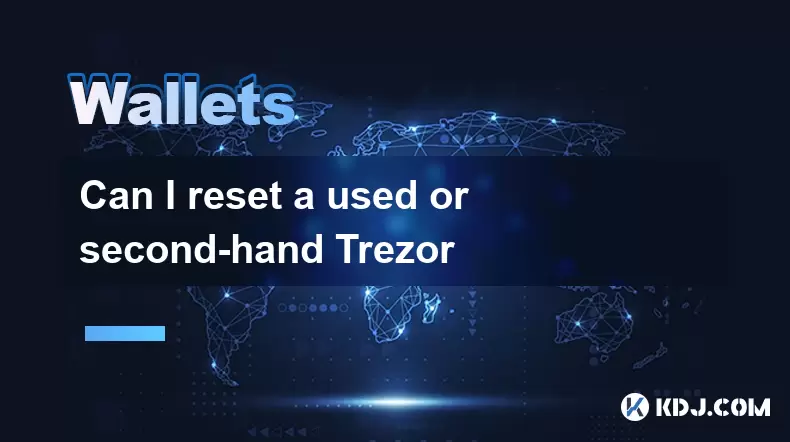
Can I reset a used or second-hand Trezor
Jul 09,2025 at 11:49am
Understanding the Reset Process for a Used or Second-Hand TrezorIf you have acquired a used or second-hand Trezor wallet, one of the first things you ...
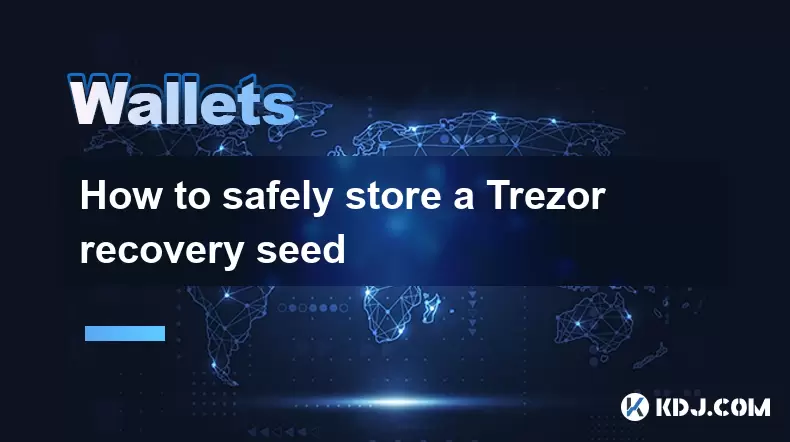
How to safely store a Trezor recovery seed
Jul 09,2025 at 11:22am
Understanding the Importance of a Trezor Recovery SeedA Trezor recovery seed is a sequence of 12 or 24 words generated during the initial setup of you...
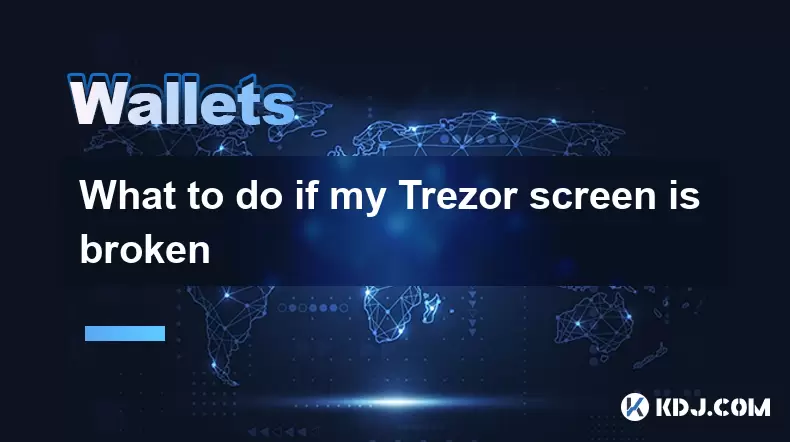
What to do if my Trezor screen is broken
Jul 09,2025 at 10:36am
Understanding the Impact of a Broken Trezor ScreenIf your Trezor screen is broken, it can significantly affect how you interact with your cryptocurren...
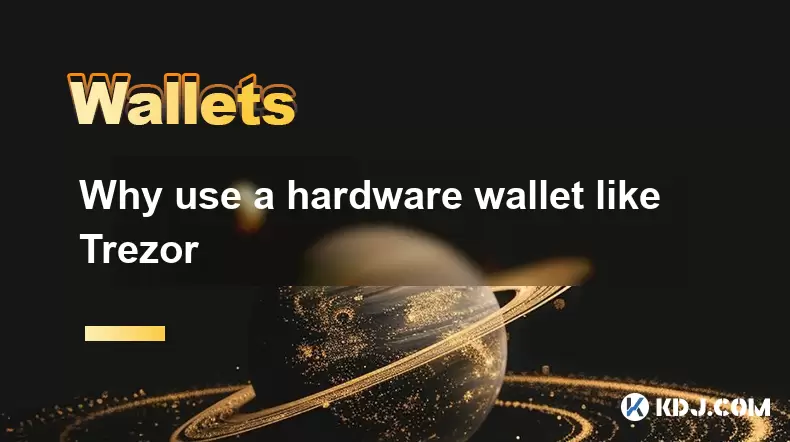
Why use a hardware wallet like Trezor
Jul 09,2025 at 11:00am
What Is a Hardware Wallet and Why It MattersA hardware wallet is a physical device designed to securely store the private keys of cryptocurrencies off...

How to connect Trezor to Rabby wallet
Jul 09,2025 at 05:49am
What Is Trezor and Rabby Wallet?Trezor is a hardware wallet developed by SatoshiLabs that allows users to securely store their cryptocurrency assets o...

What happens if I forget my Trezor passphrase
Jul 09,2025 at 03:15am
Understanding the Role of a Trezor PassphraseIf you use a Trezor hardware wallet, you may have set up a passphrase as an extra layer of security beyon...

Can I reset a used or second-hand Trezor
Jul 09,2025 at 11:49am
Understanding the Reset Process for a Used or Second-Hand TrezorIf you have acquired a used or second-hand Trezor wallet, one of the first things you ...

How to safely store a Trezor recovery seed
Jul 09,2025 at 11:22am
Understanding the Importance of a Trezor Recovery SeedA Trezor recovery seed is a sequence of 12 or 24 words generated during the initial setup of you...

What to do if my Trezor screen is broken
Jul 09,2025 at 10:36am
Understanding the Impact of a Broken Trezor ScreenIf your Trezor screen is broken, it can significantly affect how you interact with your cryptocurren...

Why use a hardware wallet like Trezor
Jul 09,2025 at 11:00am
What Is a Hardware Wallet and Why It MattersA hardware wallet is a physical device designed to securely store the private keys of cryptocurrencies off...
See all articles


























